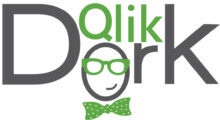
The Data Consumption Continuum
Food.
Water.
Fuels.
And my personal favorite Chocolate.
You name it we want to consume it. Health warnings have little effect at deterring us from consuming mass quantities of the wrongs things. Yet sadly there is one thing that we need to survive and it seems that no matter how hard we try we simply can’t consume enough of it … DATA.
We need to consume data to survive in our own lives, as well as within our occupations. Yet try as we may we seem to be starving for it. I believe part of the problem is that unlike eating chocolate there is no “right” way to consume data. We humans are all over what I call the Data Consumption Continuum and can’t figure out how to accommodate one another’s ferocious appetite for this particular commodity.
Static Data
Reports are the most basic form of data consumption. Static reports have been around much longer than we have had computers and or a specialty field called Business Intelligence. They are a wonderful thing in situations where the subject matter doesn’t change. Whether it be workflow reports, ie lists that I mentioned in my last post we love to consume or whether it is truly static data like reports of what our Accounts Receivable was as of a particular date.
So there are good reasons to have the 3,209 static data reports your company has. But it simply doesn’t make sense to have business meetings end with the conclusion “Yep our company is losing money. Let’s all have a great week and enjoy the last days before we are unemployed.” Someone in the meeting is inevitably going to ask the “Who, what, when, where and why” questions. Thus report 3,210 ends up being born over the course of the next several hours, days, weeks or months.
Guided Analytics
Many including yourself may think of guided analytics as the polar opposite of static reporting. I’m not one of those people.
I believe guided analytics are a wonderful way to speed up the process of asking questions and getting answers. They allow you to “drill, drill, drill” until your heart is content. My posts have praised and demonstrated the many different ways that visualizations enable us as human beings to more rapidly perceive and consume massive quantities of this wonderful commodity we call data.
For some guided analytical applications are like a sudden speed reading course. The applications allow them to consume the data from 3,209 static reports in 1 sitting. For others it’s like handing their companies 0’s and 1’s to Michelangelo and suddenly a beautiful portrait of their company appears.
The definition of the word continuum is “a continuous sequence in which adjacent elements are not perceptibly different from each other, although the extremes are quite distinct.”
For all of the wonderful things guided analytics offer I see them as a mere single step away from static reporting for one reason. They only allow you to answer the questions that you already had in mind when the applications are built. If you think you will want to see how surgical costs relate to length of stay you build your application to contain that data. It’s great that we have the technology now that enables us to consume that many 0’s and 1’s at the same time, in really slick visual ways. But is it really so magical that we are able to answer the questions we had when we asked for the application to be built?
Self-Service Analytics
Hopefully you now understand why I’ve used the phrase “data consumption continuum” and why I believe guided analytics are but a single step away from static reporting. If you don’t then you stopped reading already, so those that are still tracking with me are ready to take another step forward on the human consumption continuum to self-service analytics.
I’m honestly baffled by the concept that self-service analytics are a way to allow end users to quickly visualize data from some a single data source. Woo-hoo look at the pretty pictures I can create for you from your XLS file or a single SQL query. Really??? That’s a leap forward in technology? I’ve never known a version of Excel that didn’t offer charting right inside the tool itself. If all you want are pretty graphics from a single data set just use the tool your data is in which is likely Excel.
I believe self-service analytics enables us to answer the questions that we didn’t have when we built our guided analytics solutions. It enables us to consume all of the data we built into our application and then begin consuming more data. Data that perhaps wasn’t even available when our guided analytics applications were constructed.
The important thing in my mind is that self-service analytics must offer the ability to consume new data as well as our existing data sources. When I get to the end of the road and can’t get answers just looking at my cost and length of stay data I need the ability to now consume readmission data along with that data not instead of it. To consume patient vital information along with it. To consume patient satisfaction data along with it. Whatever the new data may be self-service analytics should be an additive process. A step forward on a continuum of our consumption of mass quantities of data. One that allows us to grab the data and move on rather than having to go through a long requirements and prioritization exercise with IT.
Predictive Analytics
For many data science is very hard to understand. It seems that they think Data Scientists go into a room with their magic potions and terabytes of data and emerge with all of the answers to the company’s problems. That’s simply not the case.
Data scientists simply apply age old statistical formulas to data. The same data that we display in static reports. The same data that we display in guided analytics applications. The same data that we consume in self-service analytics. But they do so in a slightly advanced and more scientific approach. You or I as mere mortals say “My spidey senses are tingling. I think there may be a relationship between our profit and the patient’s length of stay.” We ask for a report, we use guided analytics or perhaps self-service analytics and if we see even a minor trend we immediately jump to a conclusion there is a cause and effect, not just a relationship and we say “Aha I’m a genius! Quick change everything in our company I’ve found the problem.”
Data scientists say “give me the data for every variable we have and I will help you find the BEST correlations. The ones that statistically have the highest probabilities. The factors that actually lead to patients being readmitted for instance.”
That is a great thing. But it’s not like they simply run a magic statistical formula and come to the answers because that isn’t how statistics works. They methodically run formulas on different combinations of the variables. What about A, B, C, D and E? Nothing there so let me try A, B, D, E and F. Nothing there. Let me try this. Let me try that. Let me try the other thing. And they churn and churn and churn very methodically until months later they provide an answer. An answer that in the past could have been achieved with more people and more time. So my assertion is that like the steps forward from static reporting to guided analytics and then to self-service analytics predictive analytics is a step forward simply in that it enables us to do things faster.
Each phase I’ve discussed allows us to take a step forward. A step that speeds things up. A step that allows us to consume more data. But the incremental steps are obvious to follow from one to the other. Yet if you look at how far apart static data is from self-service analytics you see that those extremes really are quite different. Static data reports identify the historical data we already had in our systems. While the result of predictive analytics is even more data that we can use and when combined with our current data can identify alternative actions we can take. Prompting us to take action rather than simply reporting to us. In other words a Data Consumption Continuum.
I have two reasons for this post:
- To help you realize that wherever you may happen to be along the continuum in your ability to either produce or consume data you should consider the fact that the others in your company who may be at a different stage aren’t “dinosaurs” and they aren’t just “resistant to change” and aren’t really that different from you. If you change your focus and understand the key concepts that differentiate the stages you will be better equipped to communicate with them so that you can both move forward as a team.
- To help you realize that instead of looking at each phase as something completely different that requires it’s own tools you should consider thinking of implementing a data consumption “platform” rather than implementing new tools for each stage you progress. A platform that enables you to surface your valuable data one time and reuse it over and over along the various stages.
Like what you are reading be part of the conversation and share your thoughts. Also consider showing me some love and following @QlikDork on Twitter.


Spot on! It is often the culture, of an organization, the promote/hinders growth along the continuum.
Great insight and story Qlik Dork! 🙂